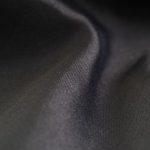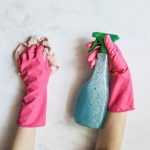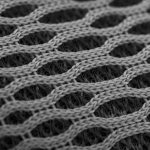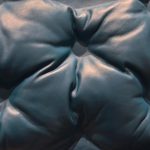When considering fabric protectors, you might find yourself torn between Scotchgard Water Shield and Fabric Protector. Each has its own unique features and benefits to offer.
It's important to weigh the key factors like formulation, effectiveness in stain and water protection, application methods and coverage, durability, longevity, and environmental impact.
For instance, Scotchgard Water Shield is known for its ability to repel water and block stains, while Fabric Protector is praised for its eco-friendly formulation.
By examining these aspects, you can make an informed decision on which fabric protector best suits your needs.
Key Takeaways
- Scotchgard Water Shield and Fabric Protector both provide durable water barrier protection on various fabrics without compromising breathability.
- Scotchgard Water Shield is highly effective on outdoor fabrics, while Fabric Protector is known for its effectiveness on indoor upholstery and clothing.
- Both products can be applied using a spray-on method and offer a large coverage area for optimal protection against stains and water.
- While both Scotchgard Water Shield and Fabric Protector demonstrate impressive durability, Scotchgard Water Shield may have a slight edge in terms of longevity.
Key Features and Formulation
If you're comparing Scotchgard Water Shield and Fabric Protector, the key features and formulation of each product will help you understand their differences.
Let's start with the formulation comparison. Scotchgard Water Shield is formulated to create a durable water barrier on various fabrics, including polyester, nylon, and cotton, without altering the breathability of the fabric. On the other hand, Fabric Protector is designed to repel water, oils, and other liquids while maintaining the fabric's natural feel and appearance.
Both products utilize advanced formulas to provide protection against stains and spills, but their specific chemical compositions may vary to target different types of fabrics and contaminants.
When it comes to application techniques, Scotchgard Water Shield should be applied to clean, dry fabrics in a well-ventilated area, and it requires a more thorough application to ensure complete coverage. Fabric Protector, on the other hand, can be applied to both wet and dry fabrics, making it more convenient for on-the-go use.
Understanding the nuances of their formulations and application techniques can help you make an informed decision based on your specific needs and preferences.
Effectiveness in Stain and Water Protection
For optimal performance in stain and water protection, both Scotchgard Water Shield and Fabric Protector demonstrate effectiveness in safeguarding various fabrics against spills and blemishes. When comparing the two products, user reviews highlight that both provide reliable protection against water and stains.
Scotchgard Water Shield is praised for its ability to create a durable water barrier on outdoor fabrics, while Fabric Protector is known for its effectiveness on indoor upholstery and clothing. In terms of cost, Scotchgard Water Shield is slightly more expensive but offers a larger quantity per can compared to Fabric Protector.
In terms of application techniques, both products are easy to apply and require a simple spray-on method. When considering the effectiveness in stain and water protection, it's important to note that user reviews have shown positive results for both products.
Ultimately, the choice between Scotchgard Water Shield and Fabric Protector may depend on the specific fabrics you need to protect and whether you prioritize outdoor or indoor use. Both products have proven to be reliable in safeguarding fabrics against spills and stains, making them valuable options for maintaining the quality and appearance of your belongings.
Application Methods and Coverage
You can apply both Scotchgard Water Shield and Fabric Protector using a simple spray-on method for effective coverage. This application technique ensures that the fabric protector evenly covers the surface, creating a barrier against stains and water. The effectiveness of the product relies heavily on the coverage area, making the application method crucial for optimal performance.
When comparing the application methods of Scotchgard Water Shield and Fabric Protector, it is important to consider the coverage area each product offers. Here's a comparison of their application methods and coverage area:
| Application Method | Coverage Area |
|---|---|
| Spray-on | Large |
| Application techniques | Effective |
Both products share the same spray-on application method, providing a large coverage area. This application technique ensures that the fabric protector can effectively cover a wide surface, offering protection against stains and water. The effectiveness of the product heavily relies on the coverage area, making the spray application an important factor in achieving the desired results.
Durability and Longevity
To assess the durability and longevity of both Scotchgard Water Shield and Fabric Protector, consider their effectiveness over an extended period of use.
Scotchgard Water Shield is known for its exceptional durability, providing long-lasting protection against water and stains. Its ability to repel liquids and maintain its effectiveness over time makes it a top choice for those looking for enduring fabric protection.
On the other hand, Fabric Protector also demonstrates impressive durability, forming a strong barrier against spills and stains. Both products offer excellent longevity performance, maintaining their protective qualities through repeated use and cleaning.
When comparing durability, Scotchgard Water Shield may have a slight edge due to its reputation for withstanding the test of time, but Fabric Protector isn't far behind and can also provide reliable long-term protection.
Ultimately, both products exhibit commendable durability and longevity in safeguarding fabrics, offering consumers valuable options for preserving the quality of their belongings.
Environmental Impact and Safety Considerations
Considering the environmental impact and safety considerations, it's important to evaluate the potential effects of these fabric protectors over time. Scotchgard Water Shield and Fabric Protector are designed to repel liquids and resist stains, but it's crucial to assess their impact on the environment and safety.
Both products contain chemicals that can be harmful if not used properly. Environmental impact studies suggest that the chemicals in fabric protectors can leach into the soil and water, potentially harming aquatic life and ecosystems. It's essential to use these products in a well-ventilated area and follow safety guidelines to minimize exposure. Additionally, proper disposal of containers and leftover product is crucial to prevent environmental contamination.
When considering the environmental impact and safety considerations, it's important to weigh the benefits of stain resistance against potential risks. Always follow the manufacturer's instructions and consider using eco-friendly alternatives if environmental impact and safety are top priorities for you.
Being mindful of the environmental impact and safety considerations will ensure that you make an informed decision when choosing a fabric protector.
Frequently Asked Questions
Can Scotchgard Water Shield Be Used on Outdoor Furniture and Umbrellas?
Yes, Scotchgard Water Shield can be used on outdoor furniture and umbrellas. When applied correctly, it provides effective protection for outdoor textiles, prolonging their longevity. Proper application techniques are crucial for maximizing its effectiveness.
Does Either Fabric Protector Offer UV Protection for Fabrics?
Yes, both Scotchgard Water Shield and Fabric Protector offer UV protection for fabrics. They improve longevity and effectiveness by providing a barrier against UV rays, preventing fading and damage. Be sure to reapply for continued protection.
Are These Fabric Protectors Safe to Use on Children's Clothing and Bedding?
When it comes to chemical safety, it's essential to be cautious with children's clothing. Ensure the fabric protector is safe for their delicate skin. Also, effectiveness is crucial for protecting children's bedding from spills and stains.
Can the Fabric Protectors Be Used on Suede or Leather Materials?
Yes, you can use fabric protectors on suede or leather materials for leather protection and suede treatment. They are also suitable for upholstery application and shoe care. Make sure to follow the specific product instructions for best results.
Do These Fabric Protectors Have Any Specific Care Instructions for Treated Fabrics, Such as Washing or Dry Cleaning Recommendations?
When using fabric protectors, it's important to follow specific care instructions for treated fabrics. Always check for washing recommendations and dry cleaning recommendations on the product label or manufacturer's website to ensure proper maintenance.







